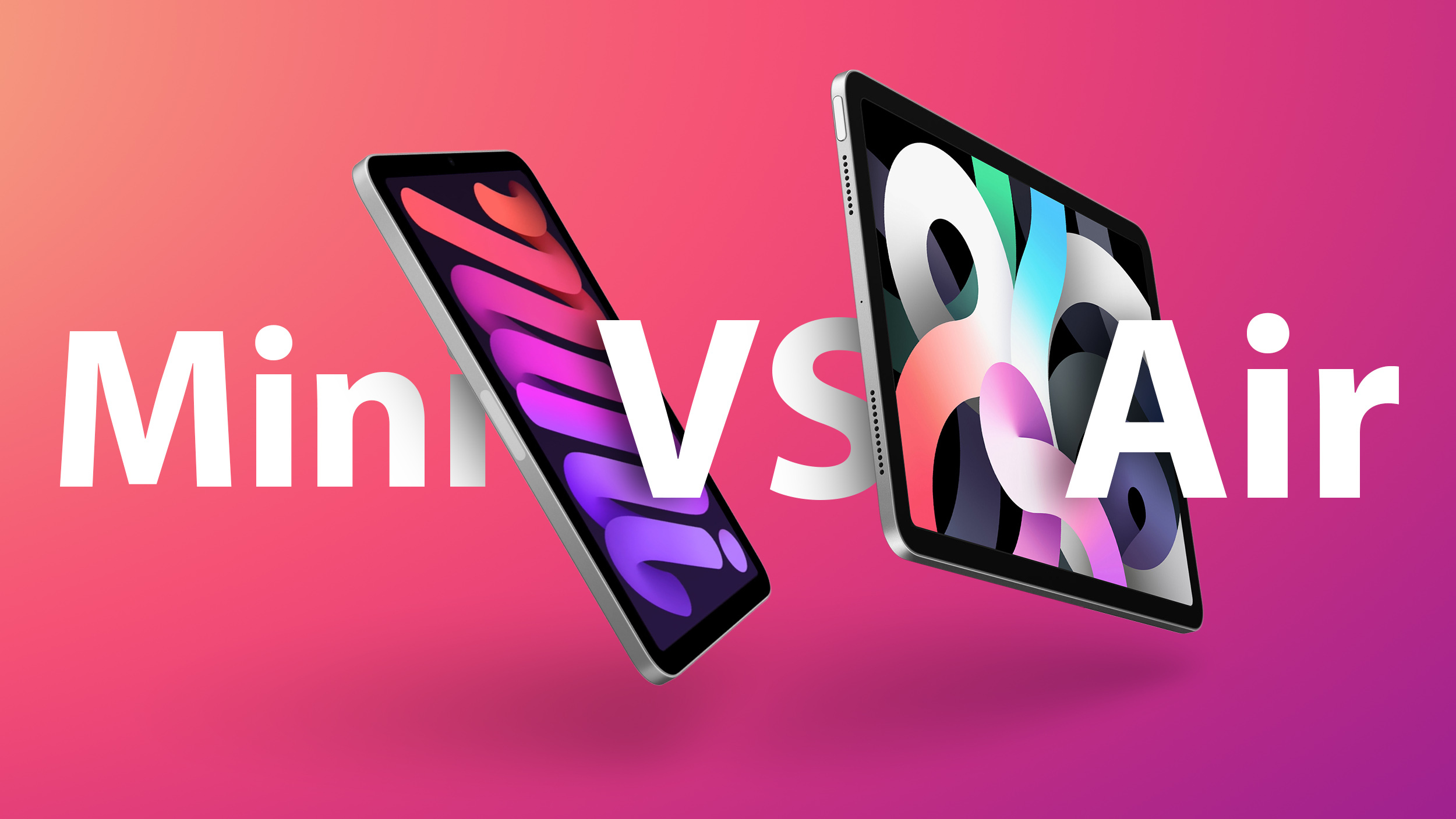
In 2021, Apple introduced the sixth-generation iPad mini, featuring a complete redesign, a larger display, the A15 Bionic chip, and more. The iPad mini now effectively shares the design of the fourth-generation iPad Air from 2020, with both devices possessing many of the same features such as an all-screen design with no Home button, Touch ID in the top power button, and stereo speakers.

Since the iPad Air was released in September 2020, should you buy the now-discontinued, bigger-screened iPad Air, or opt for the new iPad mini? Our guide answers the question of how to decide which of these two iPads is best for you.
Comparing the iPad mini and iPad Air
The iPad mini and iPad Air share a large number of key features, such as design, a rear 12MP Wide camera, and a USB-C port:
Similarities
- All-screen industrial design with flat edges
- Touch ID scanner built into the top button
- Liquid Retina display with P3 wide color, fingerprint resistant coating, 500 nits max brightness, full lamination, anti-reflective coating, and True Tone
- A-Series Bionic chip with 64-bit desktop-class architecture, 4GB of memory, and Neural Engine
- 12MP ƒ/1.8 Wide rear camera with 5x digital zoom and Smart HDR 3
- 4K video recording at up to 60fps with 3x video zoom, 1080p slo-mo video at 120fps or 240fps, and time-lapse with stablilization
- Front-facing camera with Retina Flash, Smart HDR 3, cinematic video stabilization and 1080p video recording
- Second-generation Apple Pencil compatibility
- Up to 10 hours of battery life
- USB-C port
- Two speaker audio landscape mode
- Wi-Fi 6 and Bluetooth 5.0
- Wi-Fi and Wi-Fi + Cellular models
- 64GB and 256GB storage options
Apple's specification breakdown shows that the two iPads share many of their most important features. Even so, there are a large number of meaningful differences between the iPad mini and iPad Air that are worth highlighting, including their A-series chips, front-facing cameras, keyboard compatibility, and more.
Differences
iPad mini
- 8.3-inch display with 2266‑by‑1488 resolution at 326 ppi
- Smaller, compact design for maximum portability
- A15 Bionic chip
- Rear Quad-LED True Tone flash
- 1080p HD video recording at 25fps, 30fps, or 60fps and extended dynamic range for video up to 30 fps
- 12MP ƒ/2.4 front-facing Ultra Wide camera with 2x zoom out, Center Stage, and extended dynamic range
- 6GHz 5G on cellular model
- Compatible with Bluetooth keyboards only
- Weight of up to 0.66 pound (297 grams)
- Available in Space Gray, Pink, Purple, and Starlight
iPad Air
- 10.9-inch display with 2360‑by‑1640 resolution at 264 ppi
- Larger design that is better for productivity
- A14 Bionic chip
- 1080p HD video recording at 60 fps
- 7MP ƒ/2.2 front-facing FaceTime HD camera
- 4G LTE on cellular model
- Smart Connector for external keyboards including Apple's Magic Keyboard and Smart Keyboard Folio
- Weight of up to 1.01 pounds (460 grams)
- Available in Silver, Space Gray, Rose Gold, Green, and Sky Blue
Read on for a closer look at each of these aspects, and see what exactly both iPads have to offer.
Design and Size
Size is the most obvious difference between the iPad mini and iPad Air, with the iPad mini being 52.2mm shorter and 43.7mm narrower than the iPad Air. This makes it possible for most people to hold the iPad mini from edge to edge in one hand. It is also 163 grams (0.36 pounds) lighter than the iPad Air.

The compact form factor and low weight of the iPad mini make it much more portable than the iPad Air, being far easier to fit in a small bag or even a large pocket and use on the go. Though the iPad Air is still thin and light to carry around, it simply is not as convenient to use on the go as the iPad mini, which is a device that pushes iPad portability to the extreme.
Users may feel more comfortable walking around with the iPad mini and using it discreetly in public spaces than the iPad Air, and it is also a great size for kids. Preference for one size or the other ultimately comes down to your personal use case.

Both devices feature the same squared-off industrial design language that has become the norm on a range of iPhone, iPad, and Mac devices, which makes them easier to grip and pick up off a surface.

Article Link: iPad Mini 6 vs. iPad Air 4 Buyer's Guide
Last edited:

